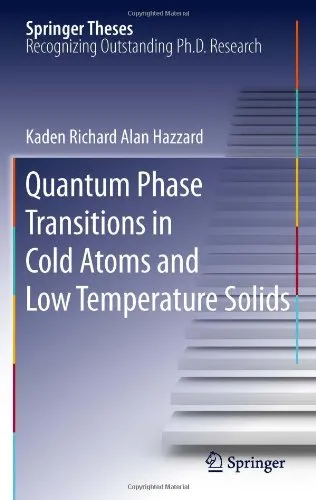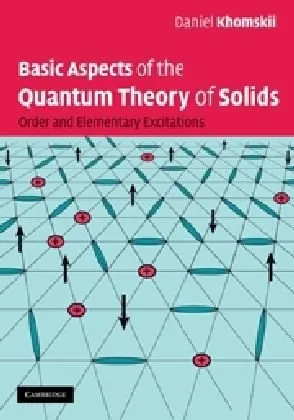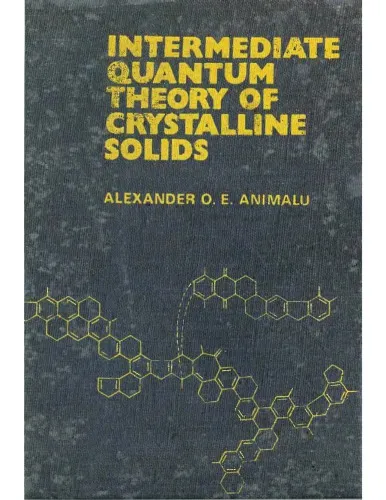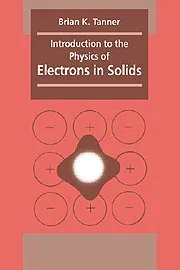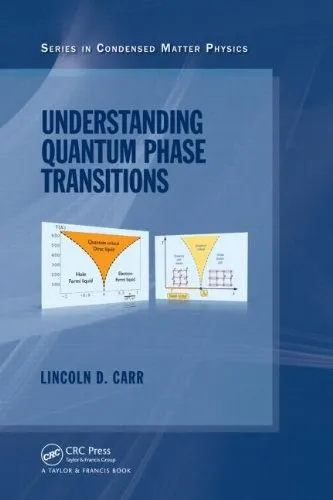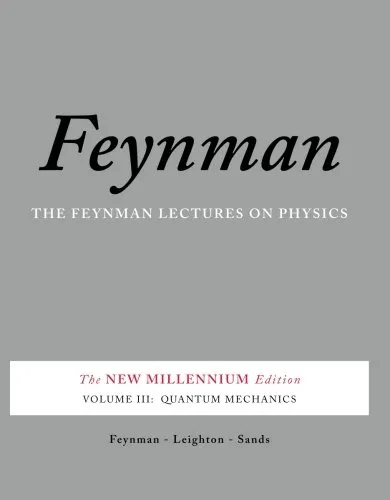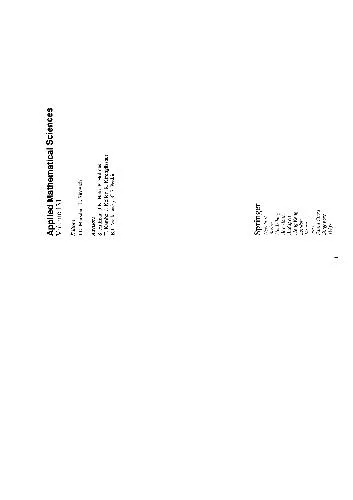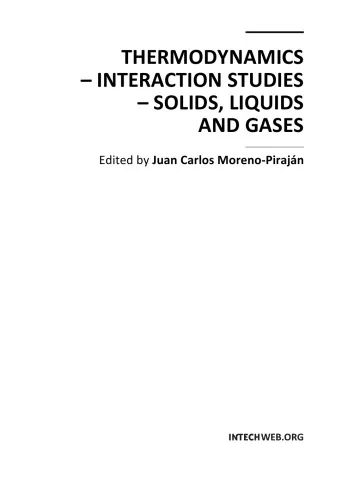Quantum Phase Transitions in Cold Atoms and Low Temperature Solids
4.6
بر اساس نظر کاربران

شما میتونید سوالاتتون در باره کتاب رو از هوش مصنوعیش بعد از ورود بپرسید
هر دانلود یا پرسش از هوش مصنوعی 2 امتیاز لازم دارد، برای بدست آوردن امتیاز رایگان، به صفحه ی راهنمای امتیازات سر بزنید و یک سری کار ارزشمند انجام بدینکتاب های مرتبط:
مقدمهای بر کتاب "Quantum Phase Transitions in Cold Atoms and Low Temperature Solids"
در کتاب "Quantum Phase Transitions in Cold Atoms and Low Temperature Solids"، نویسنده به بررسی تحولات فاز کوانتومی در اتمهای سرد و جامدات دما پایین میپردازد. این کتاب منابعی ارزشمند برای دانشجویان و پژوهشگران در حوزههای فیزیک کوانتومی و حالت جامد میباشد.
خلاصهای جامع از کتاب
کتاب در ابتدا به معرفی پایههای نظری فازهای کوانتومی و توضیحات دقیق پیرامون فیزیک اتمهای سرد پرداخته است. سپس، نویسنده با جزئیات به فصلهای متعددی که هر کدام به بخش خاصی از پژوهشهای اخیر و نظریهها پرداخته است، وارد میشود. این کتاب مجموعهای غنی از مودلهای نظری و نتایج تجربی را ارائه میدهد که درک عمیقی از پویایی و اثرات کوانتومی در سامانههای با دما پایین به خواننده میبخشد.
نکات کلیدی در کتاب
- تحلیل جامع از Quantum Phase Transitionها و تأثیرات آنها بر خواص مواد در شرایط مختلف.
- توضیحات تخصصی درباره استفاده از اتمهای سرد بهعنوان پلتفرمهایی برای مطالعه سیستمهای کوانتومی.
- ارتباط میان نظریههای فازهای کوانتومی و کاربردهای صنعتی در تکنولوژیهای جدید مانند کامپیوترهای کوانتومی.
جملات معروف از کتاب
یکی از زیباییهای فیزیک کوانتومی، قابلیت آن در توضیح رفتارهای غیرمنتظره و پیچیده در سادهترین حالتهای مواد است.
درک فازهای مختلف کوانتومی، کلید گشودن دریچههایی به سوی کشفیات جدید در علم و فناوری است.
چرا این کتاب اهمیت دارد؟
این کتاب بهطور منحصربهفردی به تقاطع بین تئوریهای پیچیده فیزیک و نتایج تجربی اختصاص یافته و اطلاعات ضروری برای کسانی که به دنبال درک عمیقتر از تحول فازهای کوانتومی هستند فراهم میکند. پژوهشگران و دانشجویانی که به مطالعه تغییر فازهای کوانتومی و کاربردهای عملی آنها در صنعت و فناوریهای نوین علاقهمندند، میتوانند از این کتاب بهرهمند شوند. علاوه بر این، این کتاب به تقویت پایههای نظری و افزایش بینش در زمینههایی مانند مواد ابررسانا، حالتهای توپولوژیکی و سیستمهای مغناطیسی مخصوصاً در دماهای پایین کمک شایانی میکند.
Introduction
Welcome to Quantum Phase Transitions in Cold, Cold Atoms and Low Temperature Solids, a comprehensive exploration into the fascinating realm of quantum physics as it relates to the critical phenomena of phase transitions. This book offers a detailed examination of the theoretical frameworks and experimental breakthroughs that have shaped our understanding of quantum phases and transitions in both ultra-cold atomic systems and solid-state materials at low temperatures. Designed for both students and researchers, this work provides insights into the intersection of condensed matter physics and quantum mechanics.
Detailed Summary of the Book
The book is structured to guide readers through the complexity of quantum phase transitions, starting from basic principles and advancing to contemporary research findings. It begins with an introduction to the fundamental concepts of phase transitions, which are changes between different states of matter. Unlike classical phase transitions such as ice melting into water, quantum phase transitions take place at absolute zero temperature and are driven by quantum fluctuations.
In the first sections, we cover the essential theoretical models, such as the Bose-Hubbard model and Heisenberg antiferromagnet, Treated with both numerical and analytical approaches. These models form the basis for understanding how various parameters influence quantum behavior in cold atomic systems and low temperature solids.
The book proceeds to delve into the exciting techniques employed in observing quantum phase transitions, including optical lattices and magnetic traps for cold atoms, as well as neutron scattering and angstrom-scale microscopy for solid materials. By examining cutting-edge experiments, readers will appreciate how recent advancements allow scientists to simulate complex quantum systems with unprecedented precision.
Vital discussions are dedicated to the applications of quantum phases in technology and materials science, where phenomena like superfluidity and quantum magnetism play crucial roles. We also explore prospective breakthroughs in quantum computing and information science deriving from these principles.
Key Takeaways
- Quantum phase transitions occur at absolute zero and are driven by changes in quantum states rather than thermal changes.
- Cold atom experiments provide a controllable environment to emulate complex quantum phenomena observed in solid-state systems.
- Understanding these transitions can lead to major advancements in technology, from superconductivity to quantum computing.
- The book provides a comprehensive review of both theoretical models and experimental techniques.
Famous Quotes from the Book
"The elegance of quantum phase transitions reflects not just their inherent complexity, but their potential to unlock untold technological advancements."
"In the microscopic dance of cold atoms and exotic materials, the secrets of the universe unfold at the brink of absolute zero."
Why This Book Matters
This book stands at the crossroads of numerous scientific disciplines, merging advanced concepts from physics, engineering, and material science. Its relevance cannot be overstated for those interested in the frontiers of quantum research. By providing foundational knowledge alongside contemporary insights, it prepares readers for the next wave of innovations in quantum technology.
As quantum phase transitions become increasingly central to emerging technologies, understanding them is paramount. Whether you are a budding physicist, an experienced researcher, or an enthusiast of science, Quantum Phase Transitions in Cold Atoms and Low Temperature Solids equips you with the knowledge necessary to navigate and contribute to this exciting field.
دانلود رایگان مستقیم
شما میتونید سوالاتتون در باره کتاب رو از هوش مصنوعیش بعد از ورود بپرسید
دسترسی به کتابها از طریق پلتفرمهای قانونی و کتابخانههای عمومی نه تنها از حقوق نویسندگان و ناشران حمایت میکند، بلکه به پایداری فرهنگ کتابخوانی نیز کمک میرساند. پیش از دانلود، لحظهای به بررسی این گزینهها فکر کنید.
این کتاب رو در پلتفرم های دیگه ببینید
WorldCat به شما کمک میکنه تا کتاب ها رو در کتابخانه های سراسر دنیا پیدا کنید
امتیازها، نظرات تخصصی و صحبت ها درباره کتاب را در Goodreads ببینید
کتابهای کمیاب یا دست دوم را در AbeBooks پیدا کنید و بخرید
1197
بازدید4.6
امتیاز0
نظر98%
رضایتنظرات:
4.6
بر اساس 0 نظر کاربران
Questions & Answers
Ask questions about this book or help others by answering
No questions yet. Be the first to ask!
